2006-01-25 - Earth observation
On the 25th january, 2006, INTEGRAL has been pointed toward the earth, in order to measure the Diffuse Cosmic Background.
The SPI characteristics makes it possible to reconstruct an image of the sky during this observation, where the earth appears as a "hole", since it occults the diffuse emission.
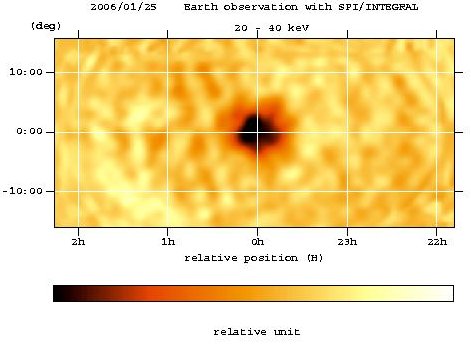
2002-11-18 - First SPI image
This is the first image of Cgy X-1 region taken by SPI during the first pointing on 11-16-02
The integration time is approx 1 hour.
The energy range is approx 25-45 keV.
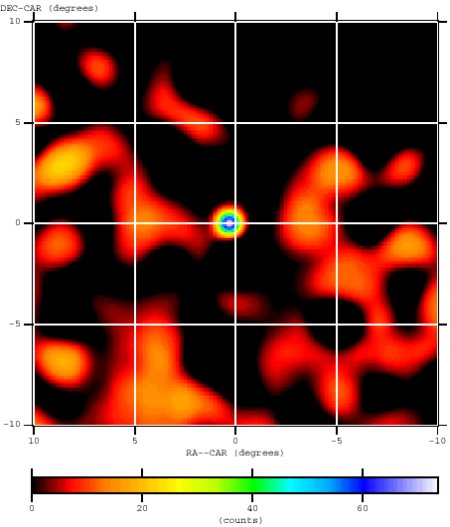
Best regards,
The SPI team
2002-11-13 - SPI News
The SPI telescope aboard INTEGRAL has detected during the period from 9-Nov-2002 (12:00) and 11-Nov-2002 (12:00) a considerable increase of gamma-ray line emission in the energy range 2-8 MeV.
In particular, broadened and shifted gamma-ray lines have been observed around 2216 keV, 3009 MeV, and 4452 keV. Increased but narrow gamma-ray line emission has also been seen at 6129 keV.
The increase of gamma-ray line flux is correlated with an increase of the SPI anticoincidence (ACS) overall counting rate, and an increase of the 1-100 MeV proton flux as seen by GOES8 (see http://www.lmsal.com/solarsoft/last_events).
The origin of the gamma-ray lines is not fully understood so far, yet the measurements impressively demonstrate the capacity of SPI to perform detailed studies of gamma-ray line profiles.
For example, the spectrum at 2.2 MeV is composed of a narrow instrumental background line at the rest energy of the deuterium line (2223 keV), and a broadened and possible redshifted line with a mean energy of 2216 keV and a width of 16 keV (FWHM).
Subtracting off the instrumental background removes the narrow deuterium line and reveals the excess emission during the flare period.
A more detailed study of the event and a more refined analysis of the data, which were acquired only 5 days after the switch-on of the SPI Germanium camera, is in progress.
The SPI team
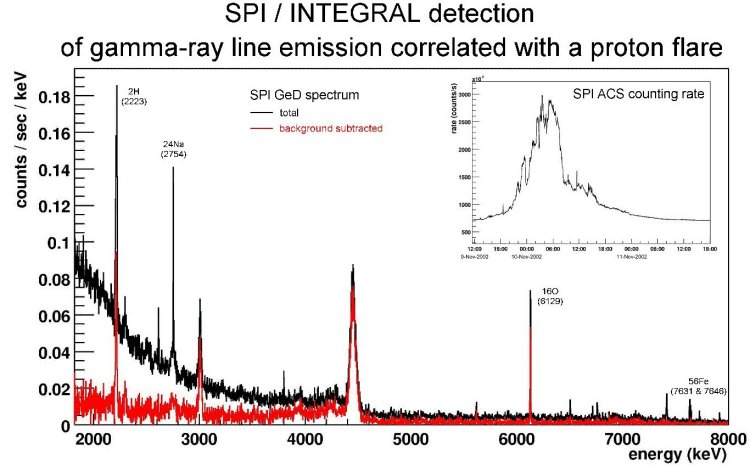
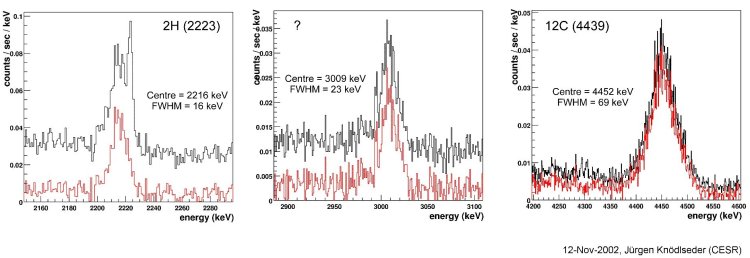
2002-11-10 - First performances of SPI Camera
Dear all,
Find hereafter a table that shows the energy resolution of SPI detectors for the 1117.1 background line emitted by 69 Ge.
This result has been obtained during Ge temperature stabilisation.
The HV was 4000 V.
Note that detector 15 has not the nominal energy resolution. But it will be improved by lowering the HV.
| keV | Det | keV | Det |
|---|---|---|---|
2.47 |
00 |
2.57 |
10 |
2.46 |
01 |
2.43 |
11 |
2.37 |
02 |
2.37 |
12 |
2.44 |
03 |
2.33 |
13 |
2.65 |
04 |
2.36 |
14 |
2.50 |
05 |
3.25 |
15 |
2.37 |
06 |
2.42 |
16 |
2.29 |
07 |
2.31 |
17 |
2.35 |
08 |
2.53 |
18 |
2.51 |
09 |
I send you 4 spectral zoom concerning this 1117 keV line : detectors 0, 1, 2, 15, 18
Best regards
Jean-Pierre Roques
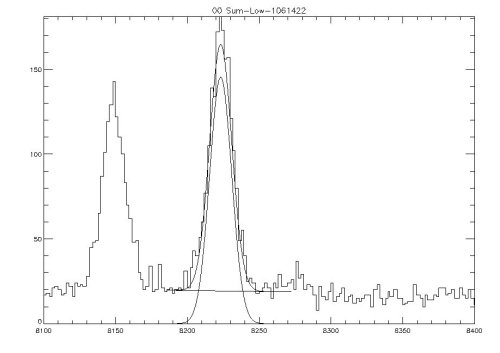
2002-11-06 - Some news from SPI
SPI Ged reached 117K at 18H on Monday 4 Nov, 2002
We proceeded to the first switch on of the High voltages. We found all the Ged alive with nominal performances except detector 15 wich showed a "typical" degradation bu pollution.
All the electronics were found in good health :
-
DFEE processes nominally the incoming data flow from GeD, ACS and PSD and groups correctly the events.
-
PSD provides curves and processes the data as expected.
-
ACS provides anticoincidence signal that reject a high fraction of the background (reduction by a factor up to 25 without any tuning).
-
A GeD temperature of 90 K has been reached early morning of 6-nov-2002.
The energy resolution of the GeD at 4000V are nominal expect detector 15 which is strightly worse. The HV of detector 15 will be adapted in order to find the best compromise.
J.P. Roques